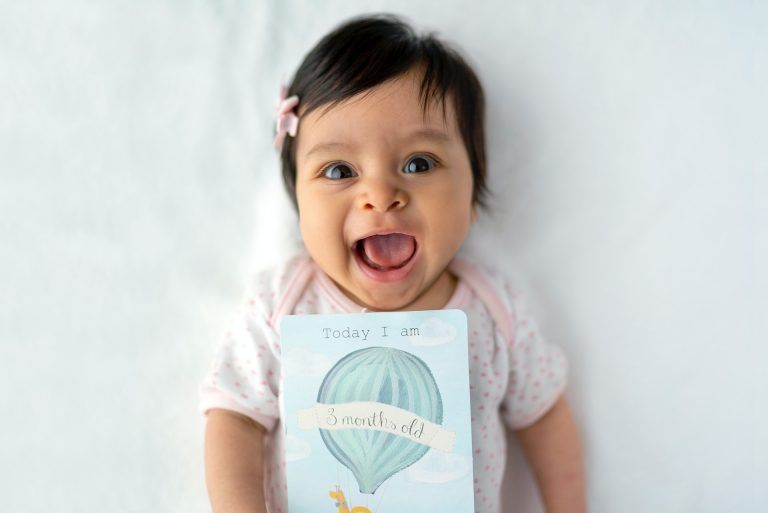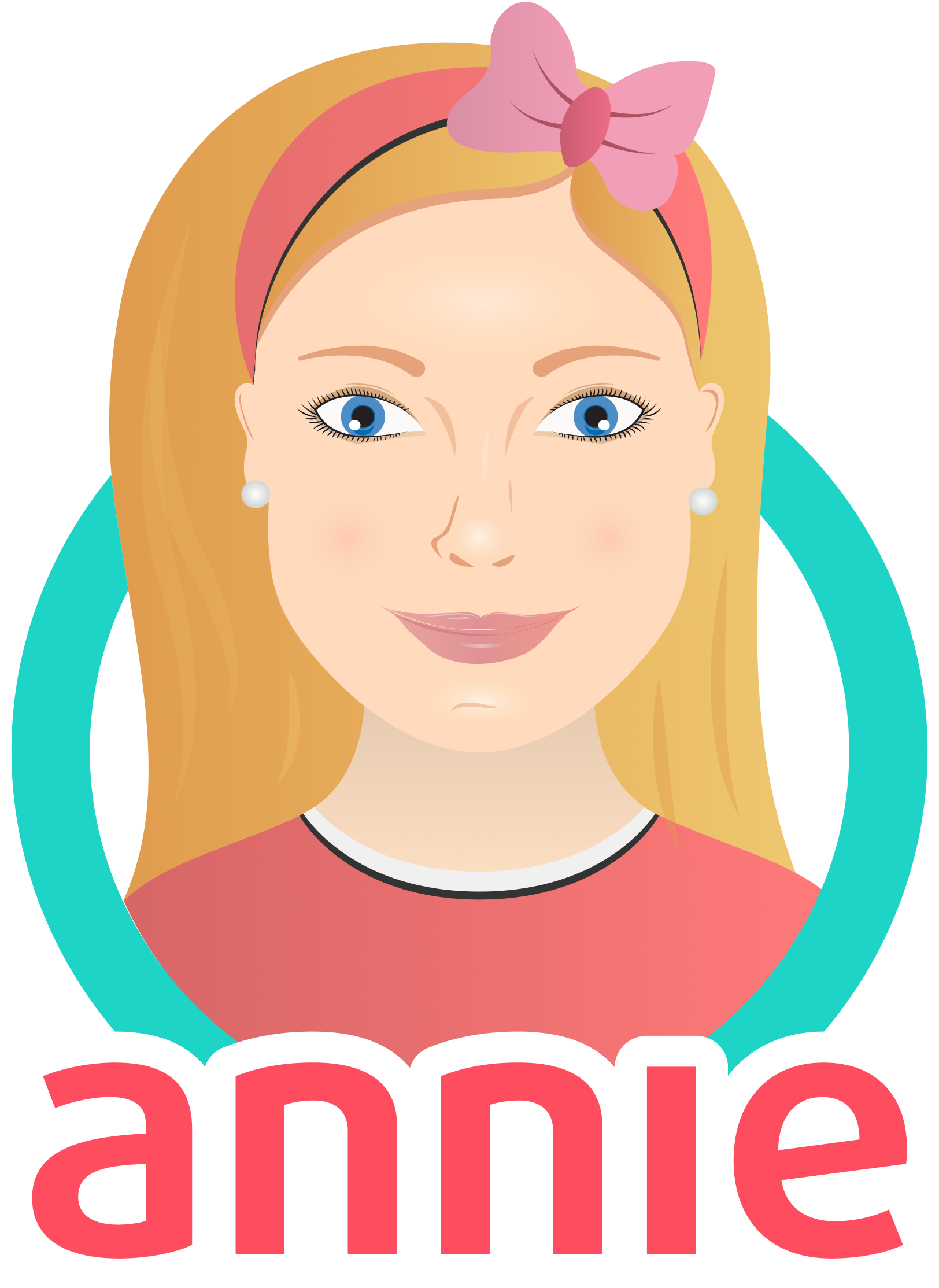
Magical Moments: Celebrating Baby 3-Month-Old Milestones (and What to Expect)
- Created:
11. 10. 2023 - Updated:
8. 11. 2023
It’s official:
Your little one is finally crossing the boundaries of the newborn age and experiencing 3 month old milestones. And just like you, they’re overjoyed about it too.
However:
As their parent, it’s your job to help them navigate these 3 month old milestones. And although it sounds tasking, it doesn’t have to be.
So tag along as we explore the various 3 month old milestones of infant development and how to navigate them.
Physical Milestones at 3 months
Fact:
The physical signs of development are the first signals of the 3 month old milestones that you’d notice in your baby. From their smile down to more coordinated movements, you don’t have to look too hard to see the physical milestones.
With that said:
Here are three physical signs that your baby is crushing the milestones at 3 months:
1. Increased Head Control
Get this:
Although babies can move their heads, they don’t gain control of those movements till around three months of age.
What does this mean?
Well, it means that those little head bumps your baby experienced as a newborn will no longer be a thing.
Essentially:
At three months, your baby can hold their head up for a particular period. Their head movements also become more coordinated so they can focus on objects.
Since the third month is a transitional period, they go from experiencing involuntary newborn actions to more voluntary ones. So, they’d be able to turn towards the source of a sound or look up at you from their baby crib.
2. Beginning of Rolling Over
Get this:
Babies start to roll over as early as four months.
However:
Since your baby starts to get mobile at three months, the actual process of rolling over starts around three months. So you notice that around this time, your newborn rolls to the side while sleeping or lying down.
And by four months, your baby gets much more comfortable rolling over.
Additionally:
Around three months, you would notice your baby attempting to lift themselves with their hands, like in a pushup. It might not be the strongest baby pushup yet, but your baby might be able to lift their upper body for a short period.
3. Hand-Eye Coordination
This is one milestone that might take you by surprise.
I mean, who wouldn’t need a moment after seeing their baby reach out to them?
That’s right!
Prior to three months, your baby would be able to move their hands. But those movements become more coordinated once they get to three months.
So:
If they see something they want, they will reach out to grab it. And if they recognize a person, the baby will stretch their tiny hands towards them.
Due to this coordination, you might notice your baby being more grabby with things. They explore their hand-eye coordination by grabbing their play toys and even your hair.
Cognitive Milestones at 3 months
Now:
Aside from physical tell tales of 3-month-old development, your baby’s brain also develops.
As such:
They start to pay more attention to their surroundings and develop sharp cognitive skills. Some of these cognitive 3 month old milestones include:
1. Recognition and Memory
For starters:
Your baby, at three months, starts recognizing familiar faces and voices.
So when you walk into the room, and they lay their eyes on you, you’d see your baby smile and possibly get excited.
Similarly:
3-month-old babies develop the ability to tell voices apart. This makes their ears perk up, and their attention turns towards the source of the sound when they hear a familiar voice.
2. Exploration of Sounds
Listen:
It’s understandable how badly you want to hear your baby talk. However, if your infant is three months old, you might have to wait a little longer.
Hang on for a second:
Your baby might not necessarily make comprehensive sounds into words by three months, but they will make sounds nonetheless.
You read correctly:
At three months, your baby transitions from making soft coos to pronouncing consonants and vowels in the form of babbles.
Essentially:
They could start by watching you speak and trying to copy the motion of your mouth and the sounds you make. Eventually, they begin to associate sounds with mouth movements, thus leading to babbles and attempts at speaking.
3. Improved Attention Span
Once you reach the 3-month-old milestone, they’ll begin to pay more attention to things around them.
To this effect:
You’d notice your infant staring at objects for extended periods than they normally did when in the newborn phase.
This improved attention span comes with increased awareness of their surroundings. So they’d become fascinated by objects and colors around them.
Emotional and Social Milestones at 3 months
Check this out:
At three months of age, you’d notice a development in your baby’s emotional and social expressions.
These baby milestones enable them to interact with others and express themselves rather than burst into tears as newborns do.
So, without any dillydallying:
Let’s get into the emotional and social milestones your baby experiences at three months:
1. Social Smiles
To put it simply:
A social smile is a happy reaction your baby develops when interacting with other people.
Social smiles are typical with 3-month-old children because they’re becoming more aware of their surroundings and people. So they start finding actions funny and smile in reaction to them.
Fact:
Parents call the 3-month-old phase the “charmer phase” because this is when the baby smiles more. They could even laugh more often.
2. Emotional Expression
It’s no news:
Newborns aren’t the best at expressing their emotions. Generally, they have two moods: crying or giggling.
And who would blame them? They’re quite new to the world and have little to no understanding of their surroundings.
Fortunately:
It’s a different story when your baby turns three months old.
At this point:
They can express their discomfort, sadness, happiness, and even annoyance much better than just by crying and laughing.
For example:
If your 3-month-old is excited to see you, their eyebrows would perch up. They might even make excited noises. And when they’re curious, you’d notice their attention drawn toward the object of curiosity. They might even reach for it.
3. Beginning of Social Awareness
Here’s the deal:
Three months marks the beginning of social awareness in infants.
At this stage:
They begin to get used to familiar faces aside from just their parents’.
That’s correct:
As they go through this age, you might notice that your baby stops being too clingy and permits other familiar faces to interact with them.
Furthermore:
The baby starts noticing the world around them and interacting with both people and pets.
Sensory Milestones at 3 months
Naturally:
Your baby’s senses aren’t fully evolved as newborns. Though they can see, smell, taste, hear, and feel, they won’t appreciate these senses till they’re three months old.
Let’s discuss the sensory milestones your baby experiences at three months of age:
1. Improved Vision
Remarkably:
Once your baby turns three months old, their vision improves significantly. They start to perceive colors and might even find a favorite one.
Also:
They’re more aware of heights and depths. So they can tell how tall a person is or how far the ground is when you lift them.
This improved vision enables them to follow objects around and stay focused on colors and other things they like.
2. Sound Localization
At three months, your child can recognize sounds and turn towards those that pique their interest.
From footsteps to music, you’d see your baby get excited at sounds and nod their heads. They might even try to mimic the sounds their baby toys make.
In essence:
Their hearing becomes much sharper, and they begin to connect emotions to sounds.
3. Developing Taste and Smell
Let’s be honest:
Newborns generally don’t have a food preference. They just have hunger cues.
However:
As they turn three months, babies develop a sharper sense of taste and smell.
As a result:
You’d notice your baby choosing one food over the other or turning away when they smell something they don’t like.
Feeding and Sleep Milestones at 3 months
Listen up:
As your baby grows and navigates new senses and emotions, they will adjust to new patterns as well. These patterns cut across both their feeding and sleep routine.
Below are some feeding and sleep milestones the baby begins to experience at three months:
1. Feeding Routines
Typically:
Around three months of age, your baby gets hungrier. This is because their bodies are growing fast during this period, and they need the energy supply.
As such:
You have to adjust their feeding schedule to meet their new needs. Also, due to their new preferences, you should add more variety to their food.
During this period, you could introduce new food to their feeding routines and explore what they like to eat.
2. Sleep Patterns
This is a no-brainer:
Newborn sleep patterns aren’t exactly the most stable, even though they sleep for most of the day. And the best way to track these patterns is by watching their wake windows.
However:
As your child transitions out of the newborn phase at three months, their sleep begins to consolidate.
Over time:
Your baby would sleep for longer periods at a time during the day. And at night, they could even get up to five straight hours of sleep.
Tips for Encouraging Healthy Development
Now that you know what to expect when your newborn hits the 3-month-old mark, you must help them navigate this period.
With that in mind:
Here are three tips for encouraging your child’s healthy development:
1. Play Ideas
Playing helps your child apply their developing cognitive skills on a daily basis.
Astonishing, isn’t it?
Not only does it aid brain development, but it helps your child grow stronger, too. As they move around, their bones and muscles develop quicker, and they learn more about their body.
So:
You can introduce your baby to toys and activities such as picture books, ball toys, and activity stations.
2. Reading and Communication
Think about it:
Your developing 3-month-old baby learns by observing the things around them and copying what they see.
Hence:
If you’re regularly interacting with your baby, you teach them how to make certain sounds, thus aiding their brain development.
Talking, reading, and singing are the best ways to interact with your baby to enable them to learn from you. Doing this helps them understand the significance of sounds and know how to pronounce them better.
Plus:
It’s a great way to build a bond with your infant.
3. Physical Activities
Exercise, just like with adults, is equally important for 3-month-olds.
As always:
Tummy time is a vital addition to your baby’s routine. But you can also add actions like bringing their toys within their reach so they can stretch towards them.
However:
While engaging them in activities, ensure the environment is safe and comfortable for them. To do this, you can use padded mats or a barricaded play area for your baby’s exercise time.
Final Tip: Capturing 3-Month Milestones with Annie Baby Monitor
As your baby reaches the remarkable 3-month milestone, make these precious moments last with the help of Annie Baby Monitor.
This baby monitor is unlike the usual ones in the market. With Annie, you can keep an eye on your baby and capture all those memorable moments during their life. Isn’t that amazing?
From those adorable first giggles to their growing curiosity about the world. Keep track of all special milestone videos and snapshots.

Have you ever thought about how to keep track of your baby’s development? If so, I can help you with that. Explore our article on how to make the most of Annie Baby Monitor.
Don’t miss the chance to create lasting memories. Get your Annie Baby Monitor.
Conclusion
Wrapping up:
Three month old milestones are magical moments that you and your baby have to experience together. During this period, your baby undergoes the following developmental processes:
- Physical milestones
- Cognitive milestones
- Sensory milestones
- Emotional and social milestones
- Feeding and sleep milestones
As expected:
Your baby can’t walk through this process alone. You have to step in and introduce activities such as playing, reading, communication, and exercise to aid their development.
Side note:
It can get overwhelming watching your baby grow up so fast but remember to enjoy each new milestone and celebrate them.
If you found this article insightful, let me know in the comments. You can also share your questions, experiences, or concerns.






